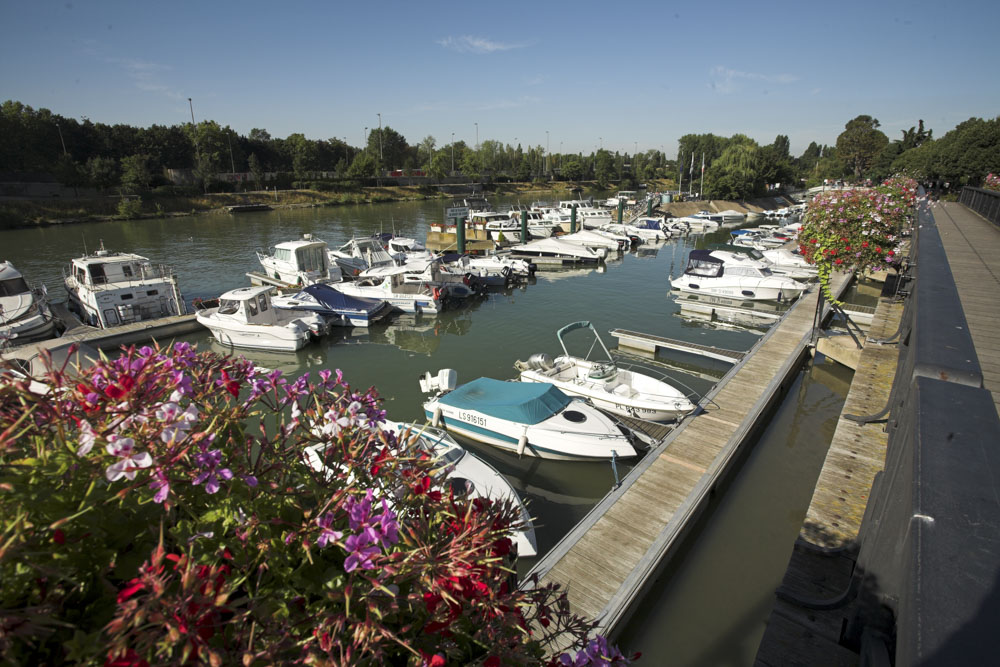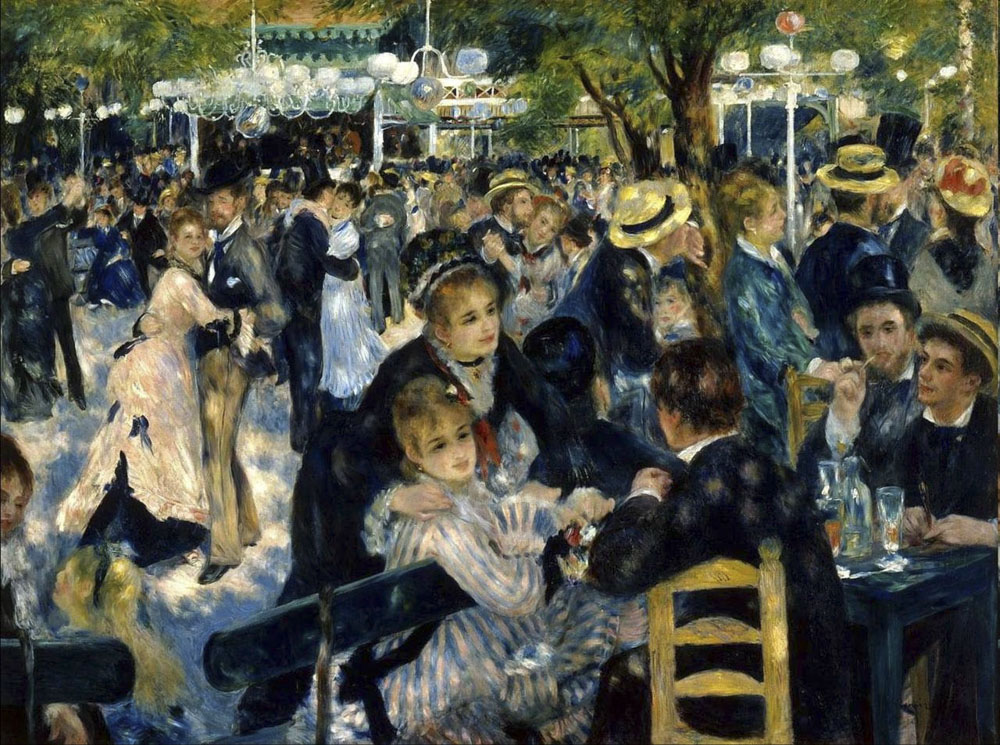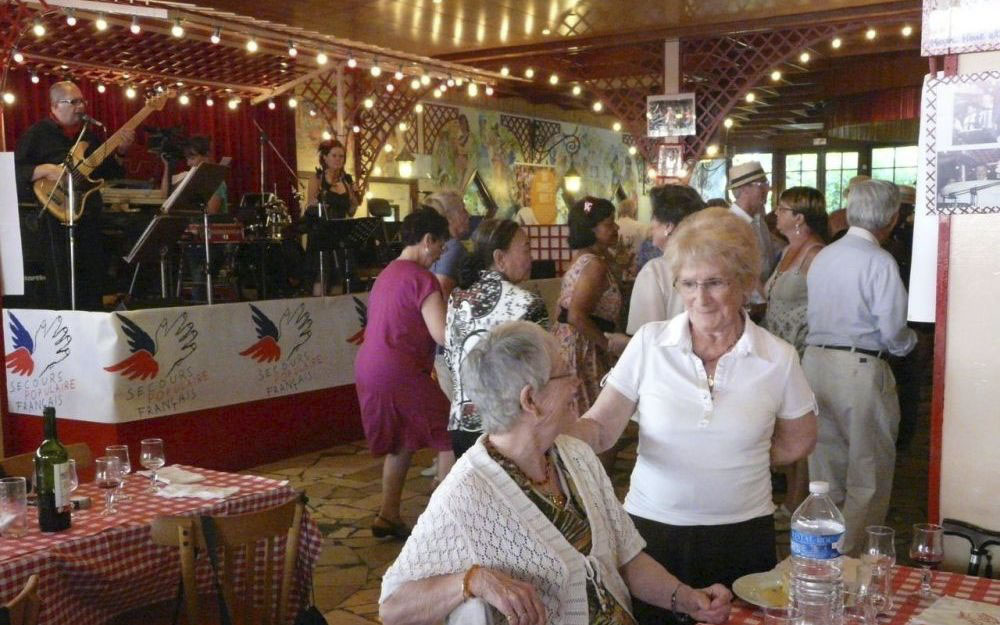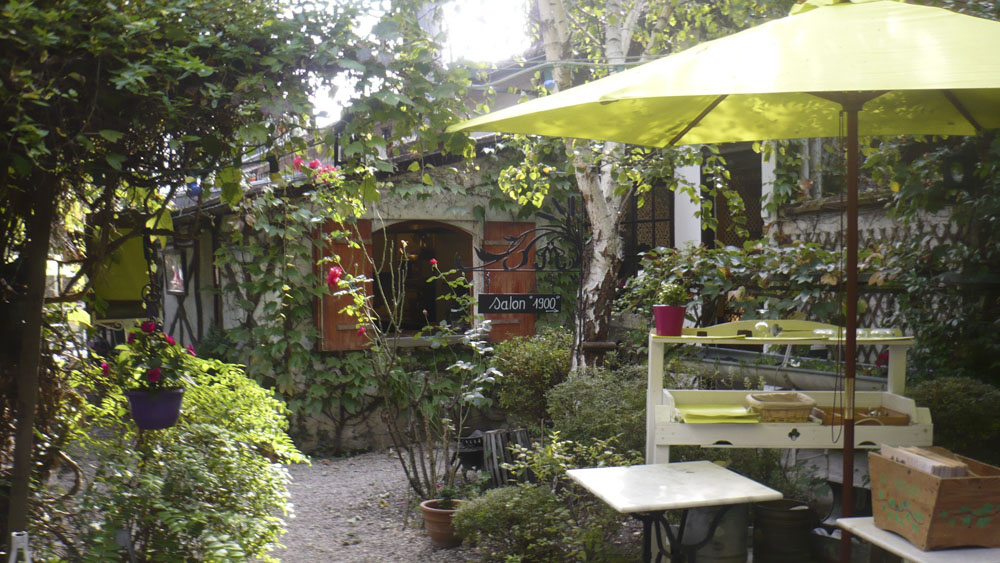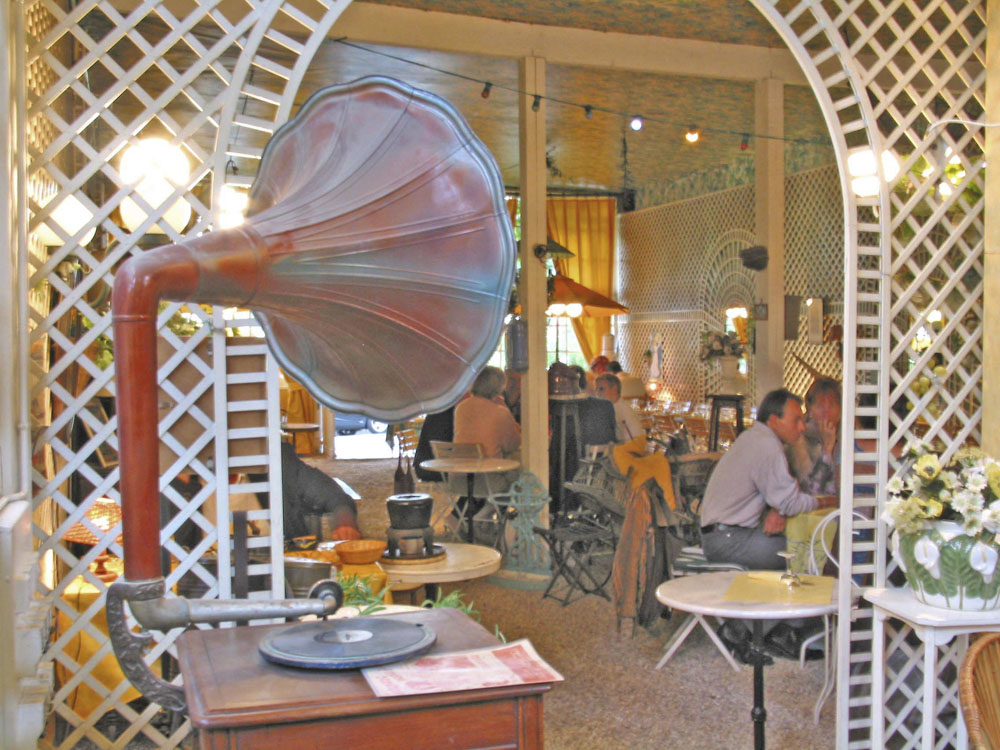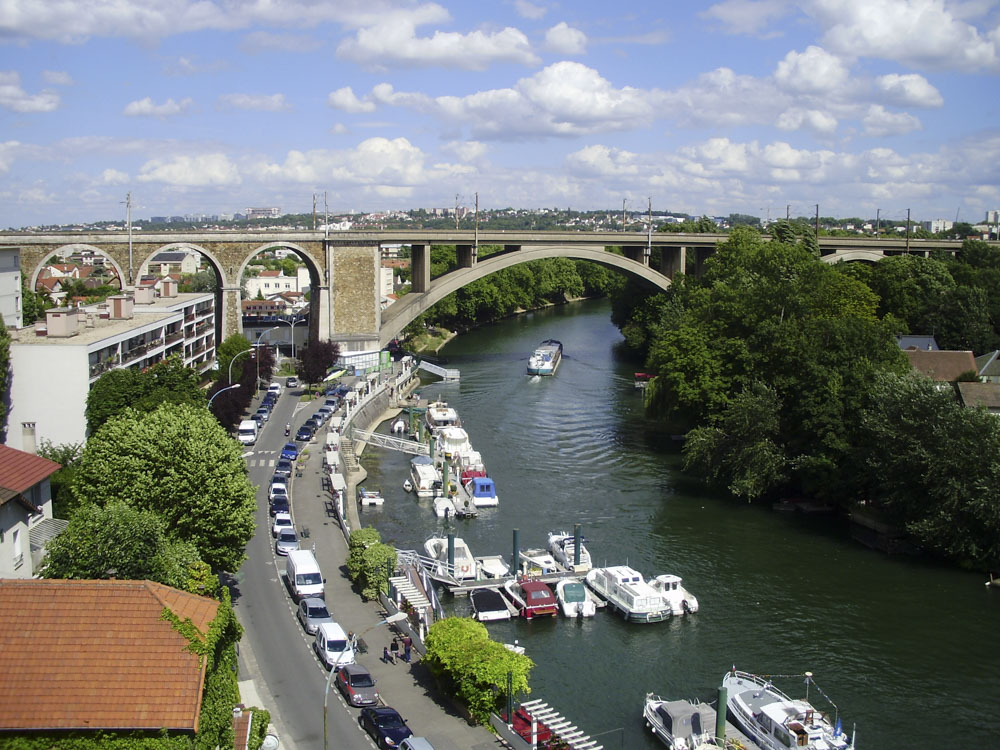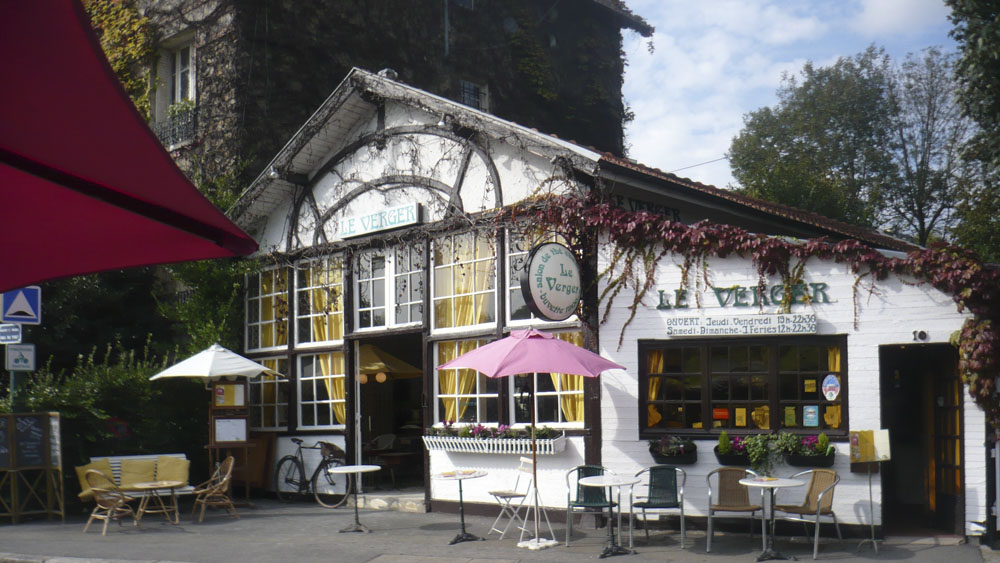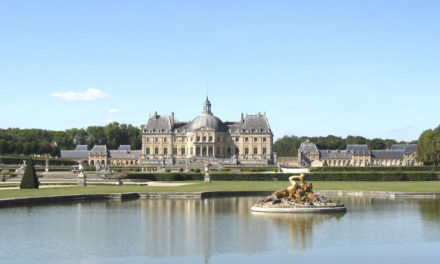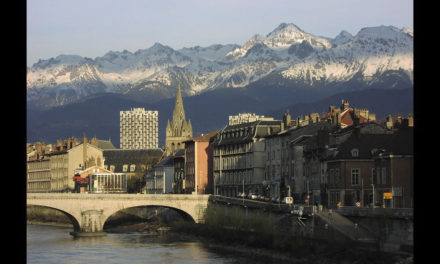To experience the romance of the ‘Guingettes’ on the banks of the Marne, you need go no further than the busy town of Nogent. On either side of the Bridge as you arrive you will see boats and signs of activity. You can park by the ‘ Port de Plaisance’ and walk along the bank and you will reach ‘Le Verger’, one of the original ‘Guingettes’ dating back to the 1900’s which has been lovingly restored in a charming and authentic manner and which is the last “Ginguette’ in Nogent. You can dine there but there is no dancing at Le Verger. However, the location is superb with a first class view of the Viaduct which has lasted since before the war. Indeed, conflicting claims as to which Allies had damaged the Viaduct and from which point, were being hotly contested in the bar, even to this day, not to mention tales of the gang of bank robbers who used to drive a Rolls and were eventually apprehended nearby, and whose pictures adorn the walls along with a plethora of period post cards, showing life as it was in the heyday of the “Guingette’ era.
Book a Hotel in Nogent-sur-Marne
The Guingettes
The Guingettes have become symbolic of life on the Marne. Their rise to popularity dates from the time when the workers used to head for the river on Sundays to relax and enjoy activities including regattas, canoeing, diving, fishing, also fairgrounds, boules, and then to dine by the water’s edge, enjoying a simple ‘cuisine’ that generally featured seafood as in ‘friture’ or ‘matelote de poisson’ or maybe ‘rabbit fricassée’ for instance. Washed down with red or white wine, the people would then take to the floor for the waltz and the polka and dance the night away. A short 800 metre stroll down the opposite bank from Nogent to Joinville-le-Pont will bring you to two of the surviving ‘Guingettes’ – ‘Le Petit Robinson’ and Chez Gégène’, where you can still be serenaded by an accordionist before dinner and dance the night away afterwards.
History 1
It was at the end of the 17th Century that the first original ‘guingettes’ were born, flourishing in the neighbouring villages to Paris, such as Belleville or Montmartre, simply because they were able to avoid the ‘octroi’ which was a tax on merchandise entering Paris. The name ‘Guingette’ comes from the wines produced in the vineyards surrounding Paris, known as ‘ginguet’ or ‘guinguet’ which being exempt from the tax, were of course, less expensive. As Paris expanded, these establishments emigrated to the banks of the Seine and the Marne, hence the association between the river and the merry restaurants where the Parisians would flock to eat, drink and dance by the water’s edge.
History 2
In the 19th Century with the rise in the standard of living which accompanied industrialisation, Sundays at the “Guingettes’ really became ‘de rigeur’ or all the rage. The important thing was, as well as eating, drinking and dancing, to observe and ‘ to be seen’. At the end of the 19th century, a substantial number of Italians settled East of Paris, bringing with them the l’accordéon which became an integral part of the whole Guingette scene. The first half of the 20th century was the golden era for these riverside restaurants. It is said that there were over 200 Guingettes in those days, providing inspiration for artists, writers, painters, photographers and film makers. Their demise began in the 60’s with the arrival of ‘long weekends’ away and the ‘rock and roll’ era. However the Val de Marne still boasts six and the Tourist Office in Nogent will provide you with a map and details of how to experience this unique pastime.
Copyright text : Sarah Francis

